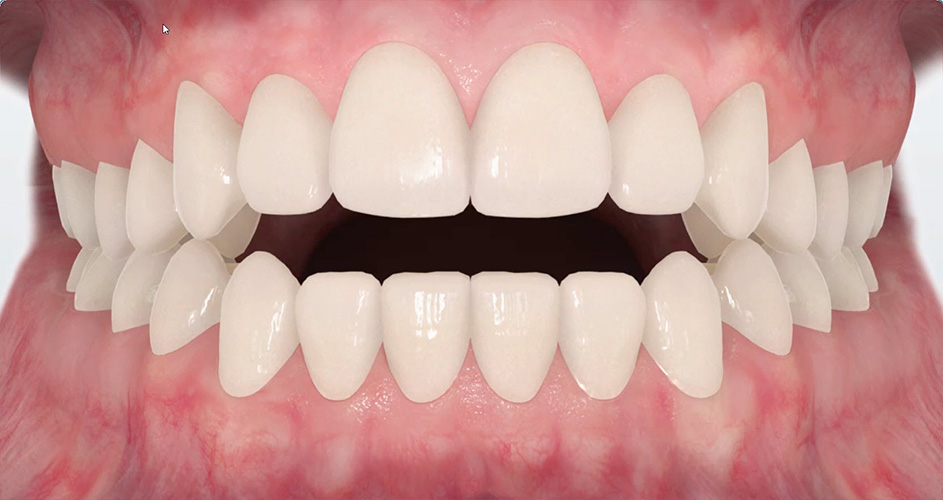Does Tongue Thrusting Create Anterior Open Bites?
For years dentists have told patients that anterior open bites (bites where there is a gap between the upper and lower front teeth) are created when the tongue is pushed between the front teeth during swallowing. Although the tongue is one of the strongest and most active muscles in the body, does swallowing actually cause open bites?
We don't spend enough time swallowing to cause an open bite
University research that measured the length of time the tongue actually contacts teeth during a swallow helped to bust this myth. Researchers counted the number of times that patients swallow during a day and then timed the duration of a single swallow. By their calculations, the tongue only contacts the teeth during swallowing for a grand total of 20 minutes per day. That is about 5 ½ hours short of the threshold time required for force to produce tooth movement.
Resting the tongue against the teeth is the problem
It turns out that anterior open bites are most commonly caused by poor RESTING tongue position. Although patients with open bites must stick their tongues between their teeth to swallow, it is the position of the tongue at rest that opens the bite in the first place. Research also showed that closing the open bite using braces and associated appliances eliminates poor tongue posture in 80% of patients. Some treatment techniques for closing open bites include habit appliances, vertical elastics, temporary anchorage devices, extractions, and surgery. Some practitioners also recommend myofunctional therapy, but I have not found it to be as effective with my patients as regular orthodontic treatment.
How to correct an open bite determined by the cause
I determine the most appropriate technique to use in closing anterior open bites by looking first at the structure of the jaws. If the jaws are out of alignment, treatment with elastics or habit appliances alone will probably not be successful. In these cases, the position of the jaws will probably need to be corrected using surgery. If jaw structure problems are not severe, I might be able to close the open bite using temporary anchors or removing teeth. If my diagnosis finds that the jaws are in normal position however, then poor tongue posture is considered the prime suspect and conservative approaches to correction are attempted first.
Keeping an open closed after correction is the hard part
Perhaps the most difficult part of treating open bites is keeping them closed after treatment is complete. In my experience, the most effective retainer type for corrected open bites is a wrap-around style retainer with a hole in the acrylic plate on the roof of the mouth. The wrap-around retainer has no metal or plastic parts which cross the occlusion. The hole in the palate creates a distraction for the tongue which attracts it upward rather than allowing it to fall between teeth at rest.
So if your front teeth don’t touch and you’ve been told you have a tongue thrust, braces may be just the fix you are looking for. See your orthodontist today to find out if orthodontic treatment is right for you.
NOTE: The author, Dr. Greg Jorgensen, is a board-certified orthodontist who is in the private practice of orthodontics in Rio Rancho, New Mexico (a suburb on the westside of Albuquerque). He was trained at BYU, Washington University in St. Louis, and the University of Iowa in the United States. Dr. Jorgensen’s 25 years of specialty practice and 10,000 finished cases qualify him an expert in two-phase treatment, extraction and non-extraction therapy, functional orthodontics, clear aligners (Invisalign), and multiple bracket systems (including conventional braces, Damon and other self-ligating brackets, Suresmile, and lingual braces). This blog for informational purposes only and is designed to help consumers understand currently accepted orthodontic concepts. It is not a venue for debating alternative treatment theories. Dr. Jorgensen is licensed to diagnose and treat patients only in the state of New Mexico. He cannot diagnose cases described in comments nor can he select treatment plans for readers. Because he has over 25,000 readers each month, it is impossible for him respond to all questions. Please read all of the comments associated with each article as most of the questions he receives each week have been asked and answered previously. The opinions expressed here are protected by copyright laws and can only be used with written permission from the author.

